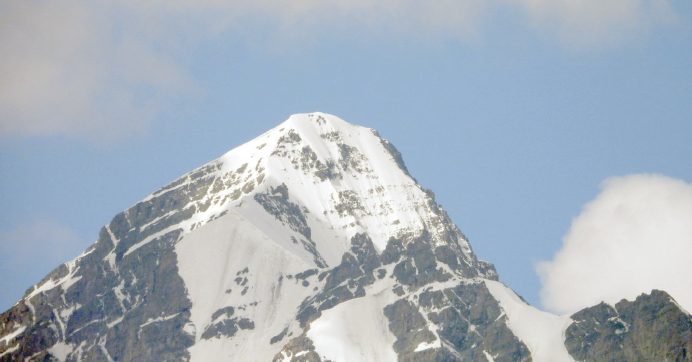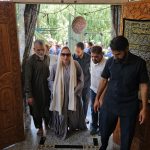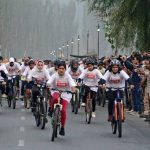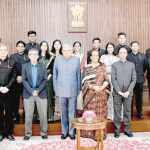Srinagar, July 19: The Kashmir Valley is grappling with an unusual surge in humidity levels this summer, causing discomfort among residents and raising alarm among climate experts.
Typically known for its dry and temperate summers, the Valley has experienced soaring humidity, exacerbating the heat and making conditions oppressive. Experts link this persistent humidity to a combination of factors including rapid glacial melt, altered wind patterns, and changing monsoon behaviour, clear indicators of escalating climate stress in the region.
“Such humid conditions are not typical for a Kashmiri summer,” said Dr.YasirYousuf, an environmentalist based in Kashmir. He pointed to glacier melting as a primary cause, which increases local moisture content. “When combined with heatwaves and stagnant air, it creates a perfect storm of climatic discomfort,” he explained. Dr.Yousuf warned that ignoring these signs could lead to irreversible ecological and humanitarian crises.
Dr. Mir Asif, a climatologist from North Kashmir, highlighted another anomaly: “Normally, high humidity triggers rainfall, but we’re witnessing suppressed convection, likely due to temperature inversions or shifting jet streams, reflecting changing monsoon dynamics.” He also noted the accelerated melting of glaciers in the Kashmir Himalayas, which contributes to rising river levels and heightened atmospheric moisture.
“The problem is worsened by deforestation and unplanned development in sensitive zones,” Dr.Asif added. Citing recent studies, he said the region’s glaciers have lost over 15% of their mass in the last 30 years, with smaller glaciers retreating faster. This retreat is linked to increased flash floods, humidity, and disruption of local weather patterns.
“This contributes to flash floods, increased humidity, and disruption of local weather systems,” he said.
Dr Asif further said people must prioritize glacier conservation, stop rampant construction in eco-sensitive zones, and restore degraded forest cover.
“If glaciers disappear, so does our water, our agriculture, and our very identity,” he said.
Locals, meanwhile, are bearing the brunt. “It’s suffocating,” said Sajjad Ahmad, a resident of Baramulla.
“We used to sleep comfortably in summer without fans. Now, it feels like Delhi or Mumbai is sticky and warm all night. The health impact is becoming apparent too, he said.
Dr.RuqayaQureshi, a physician at SMHS Hospital in Srinagar, said that they are seeing more patients with skin infections, dehydration, and respiratory problems.
“The high humidity hampers the body’s cooling mechanism, which can be dangerous, especially for children and the elderly,” she said.
Meanwhile, as per Meteorological Department (IMD) data on Saturday there was humidity at 8:30 AM was recorded at exceptionally high levels across many stations with 100% at Amarnath Holy Cave, Baltal, and Sheshnag; 92% in Gulmarg; 93% at Panjtarni; and 84% in Pahalgam. Even Srinagar City registered a morning humidity of 82%, unusually high for mid-July.
Director MeT Srinagar, Dr Mukhtar Ahmad, said that during the next 24 hours, hot and humid with brief spells of light to moderate rain along with thundershower at scattered to fairly widespread places.
“Again, 21-23rd July, generally cloudy with Intermittent spells of light to moderate Rain/thundershower at many places, with intense showers at a few places, with heavy rain at isolated places of J&K,” he said.
As per the MeT advisory, there is a possibility of intense showers with gusty winds at a few places with heavy rain at isolated to scattered places of J&K during 21-23rd July.
“Flash floods at a few vulnerable places with landslides and mudslides & and shooting stones. Rise in water level in river streams, local nallas& water logging in a few low-lying areas, and advise farmers to spray during this period,” he said.








